Wave-Induced Seafloor Instability in the Yellow River Delta: Flume Experiments
Abstract
:1. Introduction
2. Materials and Methods
2.1. Experiment Process
2.2. Wave Generation
3. Results and Discussion
3.1. Slide Surface and Ripples
3.2. Gas Distribution
3.3. Pore Pressure
3.4. Sediment Strength
4. Conclusions
- (1)
- The fine-grained seabed presents an arc-shaped oscillation failure form under wave action. The sliding surface becomes deeper and then shallower as the wave action continues. The distribution of the gas pores is substantially the same as that of the sliding surfaces.
- (2)
- We found the first evidence for possible gas migration due to wave action. The presence of gas may serve as a primer for submarine slope failures, which suggests a new mechanism for seafloor instability in the Yellow River Delta.
- (3)
- Each wave process may cause the perforation pressure of the sediment to increase, and the liquefaction resistance capacity of the sediment increases during each wave process, leading to a decrease in the excess pore pressure caused by the next wave process. The seabed is the most unstable and most susceptible to damage under wave action in the initial stage of rapid deposition of the sediment.
- (4)
- Without new depositional sediments, the existing surface sediments can form high-strength formation under wave actions.
Author Contributions
Funding
Acknowledgments
Conflicts of Interest
References
- Wang, H.; Yang, Z.; Li, G.; Jiang, W. Wave climate modeling on the abandoned Huanghe (Yellow River) delta lobe and related deltaic erosion. J. Coast. Res. 2006, 22, 906–918. [Google Scholar] [CrossRef]
- Saito, Y.; Yang, Z.S.; Hori, K. The Huanghe (Yellow River) and Changjiang (Yangtze River) deltas: A review on their characteristics, evolution and sediment discharge during the Holocene. Geomorphology 2001, 41, 219–231. [Google Scholar] [CrossRef]
- Yang, Z.; Ji, Y.; Bi, N.; Lei, K.; Wang, H. Sediment transport off the Huanghe (Yellow River) delta and in the adjacent Bohai Sea in winter and seasonal comparison. Estuar. Coast. Shelf Sci. 2011, 93, 173–181. [Google Scholar] [CrossRef]
- Bi, N.; Yang, Z.; Wang, H.; Fan, D.; Sun, X.; Lei, K. Seasonal variation of suspended-sediment transport through the southern Bohai Strait. Estuar. Coast. Shelf Sci. 2011, 93, 239–247. [Google Scholar] [CrossRef]
- Johnson, M.E.; Gudveig Baarli, B. Geomorphology and coastal erosion of a quartzite island: Hongdo in the Yellow Sea off the SW Korean Peninsula. J. Geol. 2013, 121, 503–516. [Google Scholar] [CrossRef]
- Prior, D.B.; Suhayda, J.N.; Lu, N.Z.; Bornhold, B.D. Storm wave reactivation of a submarine landslide. Nature 1989, 341, 47–50. [Google Scholar] [CrossRef]
- Guo, Z.; Zhou, W.; Zhu, C.; Yuan, F.; Rui, S. Numerical Simulations of Wave-Induced Soil Erosion in Silty Sand Seabeds. J. Mar. Sci. Eng. 2019, 7, 52. [Google Scholar] [CrossRef]
- Zhu, C.; Liu, X.; Shan, H.; Zhang, H.; Shen, Z.; Zhang, B.; Jia, Y. Properties of suspended sediment concentrations in the Yellow River delta based on observation. Mar. Georesour. Geotech. 2018, 36, 139–149. [Google Scholar] [CrossRef]
- Xu, G.; Sun, Y.; Wang, X.; Hu, G.; Song, Y. Wave-induced shallow slides and their features on the subaqueous Yellow River delta. Can. Geotech. J. 2009, 46, 1406–1417. [Google Scholar] [CrossRef]
- Jia, Y.; Zhu, C.; Liu, L.; Wang, D. Marine Geohazards: Review and Future Perspective. Acta Geol. Sin. Engl. 2016, 90, 1455–1470. [Google Scholar] [CrossRef]
- Sun, Y.; Dong, L.; Song, Y. Analysis of characteristics and formation of disturbed soil on subaqueous delta of Yellow River. Rock Soil Mech. 2008, 29, 1494–1499. [Google Scholar]
- Zhu, C.; Cheng, S.; Li, Q.; Shan, H.; Shen, Z.; Liu, X.; Jia, Y. Giant Submarine Landslide in the South China Sea: Evidence, Causes and Implications. J. Mar. Sci. Eng. 2019, 7, 152. [Google Scholar] [CrossRef]
- Chang, F. Study on Mechanism of Wave-Induced Submarine Landslide at the Yellow River Estuary, China. Ph.D. Thesis, Ocean University of China, Qingdao, China, 30 June 2009. [Google Scholar]
- Zheng, C. Shengli Chengdao Oilfield Submarine Power Cable Fault Type and Causes Analysis. Saf. Health Environ. 2016, 16, 6–10. [Google Scholar]
- Du, F. Research on the Geological Causes of Sheng Li Well Workover Platform III Overturning Accident. Ph.D. Thesis, Ocean University of China, Qingdao, China, 30 June 2013. [Google Scholar]
- Jia, Y.; Zhang, L.; Zheng, J.; Liu, X.; Jeng, D.; Shan, H. Effects of wave-induced seabed liquefaction on sediment re-suspension in the Yellow River Delta. Ocean Eng. 2014, 89, 146–156. [Google Scholar] [CrossRef]
- Keller, G.H.; Prior, D.B. Sediment dynamics of the Huanghe (Yellow River) delta and neighboring gulf of Bohai, People’s Republic of China: Project overview. Geo Mar. Lett. 1986, 6, 63–66. [Google Scholar] [CrossRef]
- Sumer, B.M.; Hatipoglu, F.; Fredsoe, J.; Sumer, S.K. The sequence of sediment behaviour during wave-induced liquefaction. Sedimentology 2006, 53, 611–629. [Google Scholar] [CrossRef]
- Tong, L.; Zhang, J.; Sun, K.; Guo, Y.; Zheng, J.; Jeng, D. Experimental study on soil response and wave attenuation in a silt bed. Ocean Eng. 2018, 160, 105–118. [Google Scholar] [CrossRef] [Green Version]
- Wang, Z.; Jia, Y.; Liu, X.; Wang, D.; Shan, H.; Guo, L.; Wei, W. In situ observation of storm-wave-induced seabed deformation with a submarine landslide monitoring system. Bull. Eng. Geol. Environ. 2018, 77, 1091–1102. [Google Scholar] [CrossRef]
- Wang, H.; Liu, H.; Zhang, M. Pore pressure response of seabed in standing waves and its mechanism. Coast. Eng. 2014, 91, 213–219. [Google Scholar] [CrossRef]
- Liu, X.; Jia, Y.; Zheng, J.; Wen, M.; Shan, H. An experimental investigation of wave-induced sediment responses in a natural silty seabed: New insights into seabed stratification. Sedimentology 2017, 64, 508–529. [Google Scholar] [CrossRef]
- Xu, G.; Liu, Z.; Sun, Y.; Wan, X.; Lin, L.; Ren, Y. Experimental characterization of storm liquefaction deposits sequences. Mar. Geol. 2016, 382, 191–199. [Google Scholar] [CrossRef]
- Zhang, S.; Jia, Y.; Wen, M.; Wang, Z.; Zhang, Y.; Zhu, C.; Li, B.; Liu, X. Vertical migration of fine-grained sediments from interior to surface of seabed driven by seepage flows—‘sub-bottom sediment pump action’. J. Ocean Univ. China 2017, 16, 15–24. [Google Scholar] [CrossRef]
- Yang, Q.; Cheng, K.; Wang, Y.; Ahmad, M. Improvement of semi-resolved CFD-DEM model for seepage-induced fine-particle migration: Eliminate limitation on mesh refinement. Comput. Geotech. 2019, 110, 1–18. [Google Scholar] [CrossRef]
- Li, A.; Davies, R.J.; Yang, J. Gas trapped below hydrate as a primer for submarine slope failures. Mar. Geol. 2016, 380, 264–271. [Google Scholar] [CrossRef]
- Yang, Q.; Ren, Y.; Niu, J.; Cheng, K.; Hu, Y.; Wang, Y. Characteristics of soft marine clay under cyclic loading: A review. Bull. Eng. Geol. Environ. 2018, 77, 1027–1046. [Google Scholar] [CrossRef]
- Zhang, Y.; Jeng, D.S.; Zhao, H.Y.; Zhang, J.S. An integrated model for pore pressure accumulations in marine sediment under combined wave and current loading. Geomech. Eng. 2016, 10, 387–403. [Google Scholar] [CrossRef]
- Barry, M.A.; Boudreau, B.P.; Johnson, B.D. Gas domes in soft cohesive sediments. Geology 2012, 40, 379–382. [Google Scholar] [CrossRef]
- Williams, S.C.P. Skimming the surface of underwater landslides. Proc. Natl. Acad. Sci. USA 2016, 113, 1675–1678. [Google Scholar] [CrossRef] [Green Version]
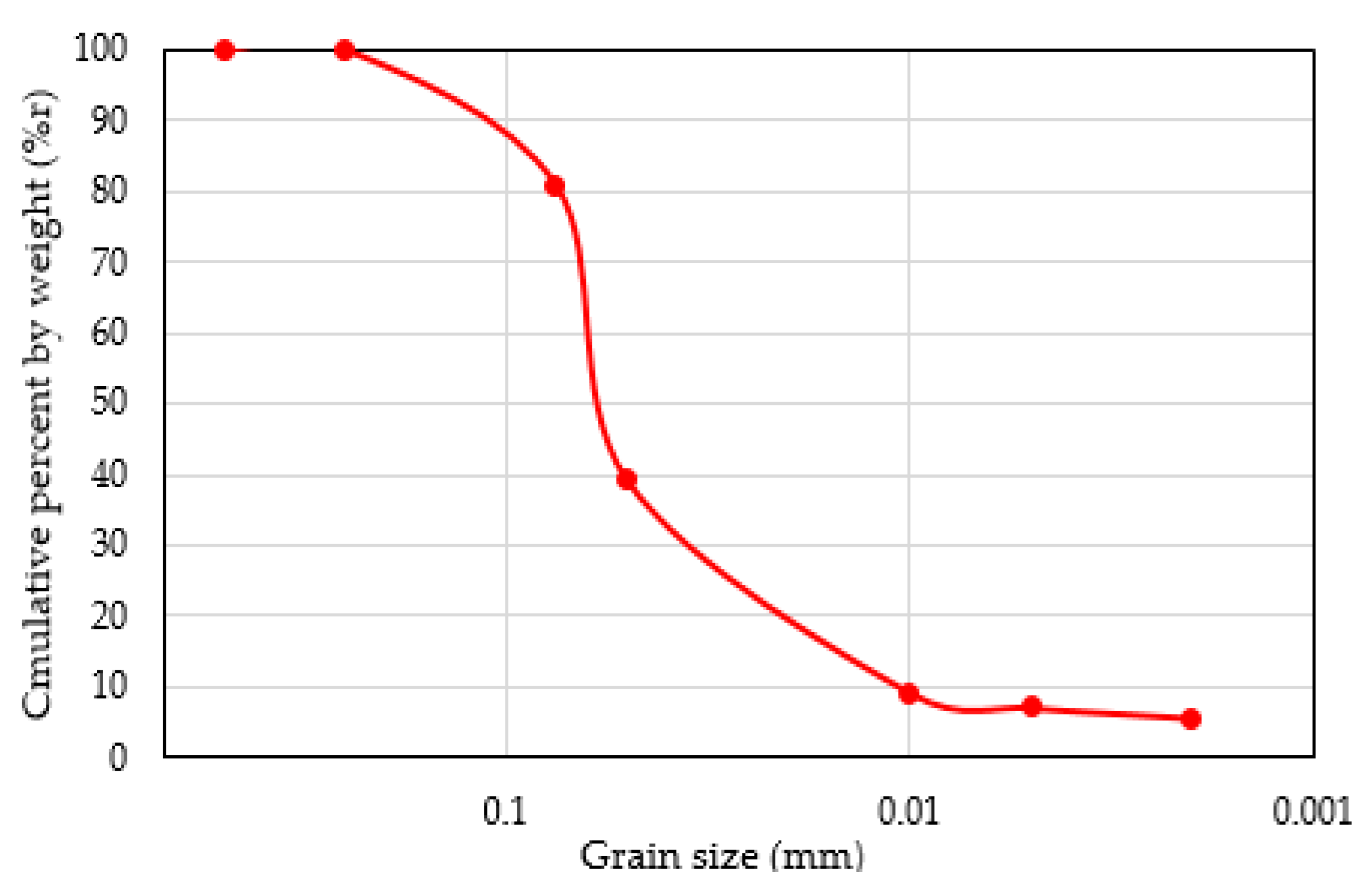
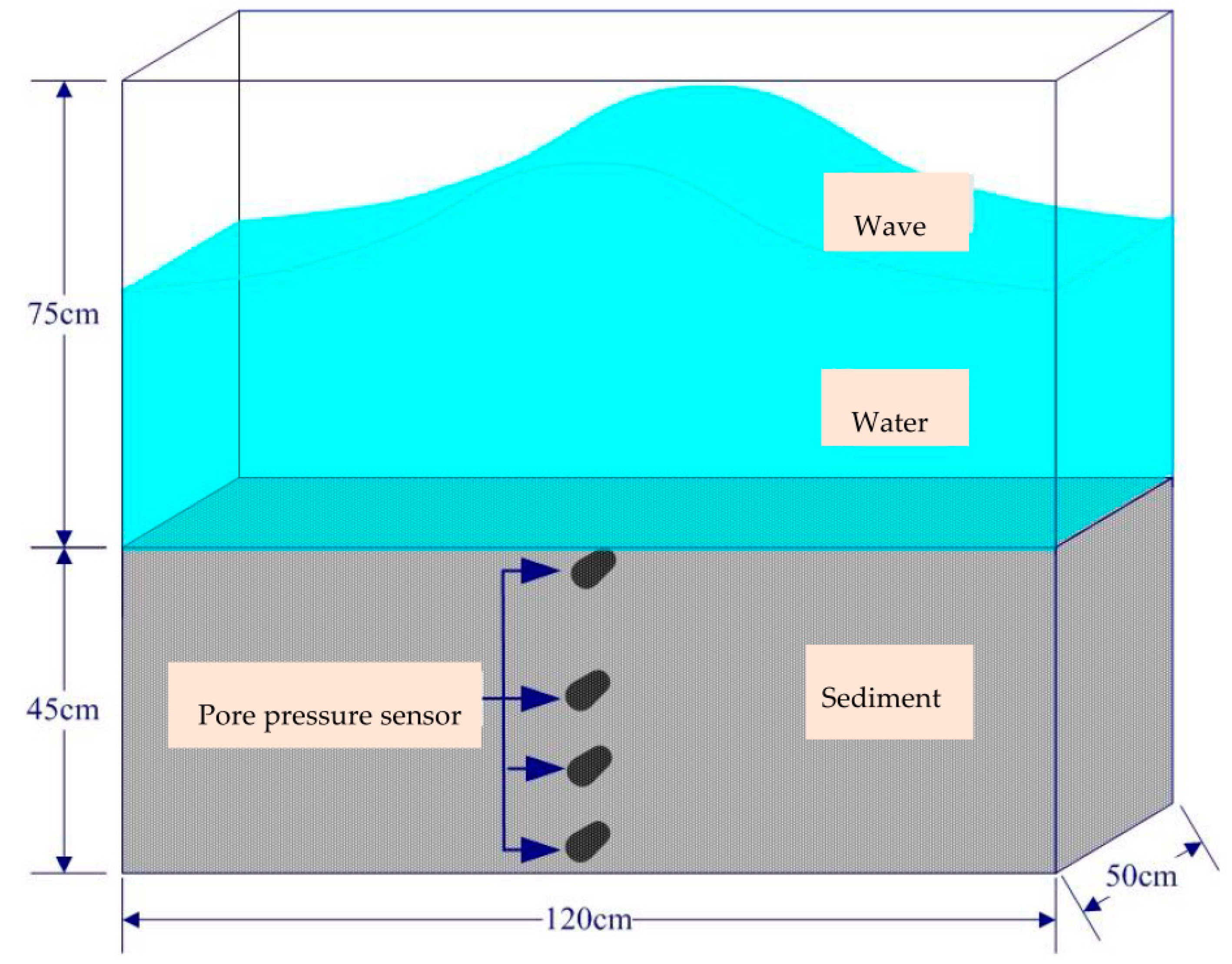
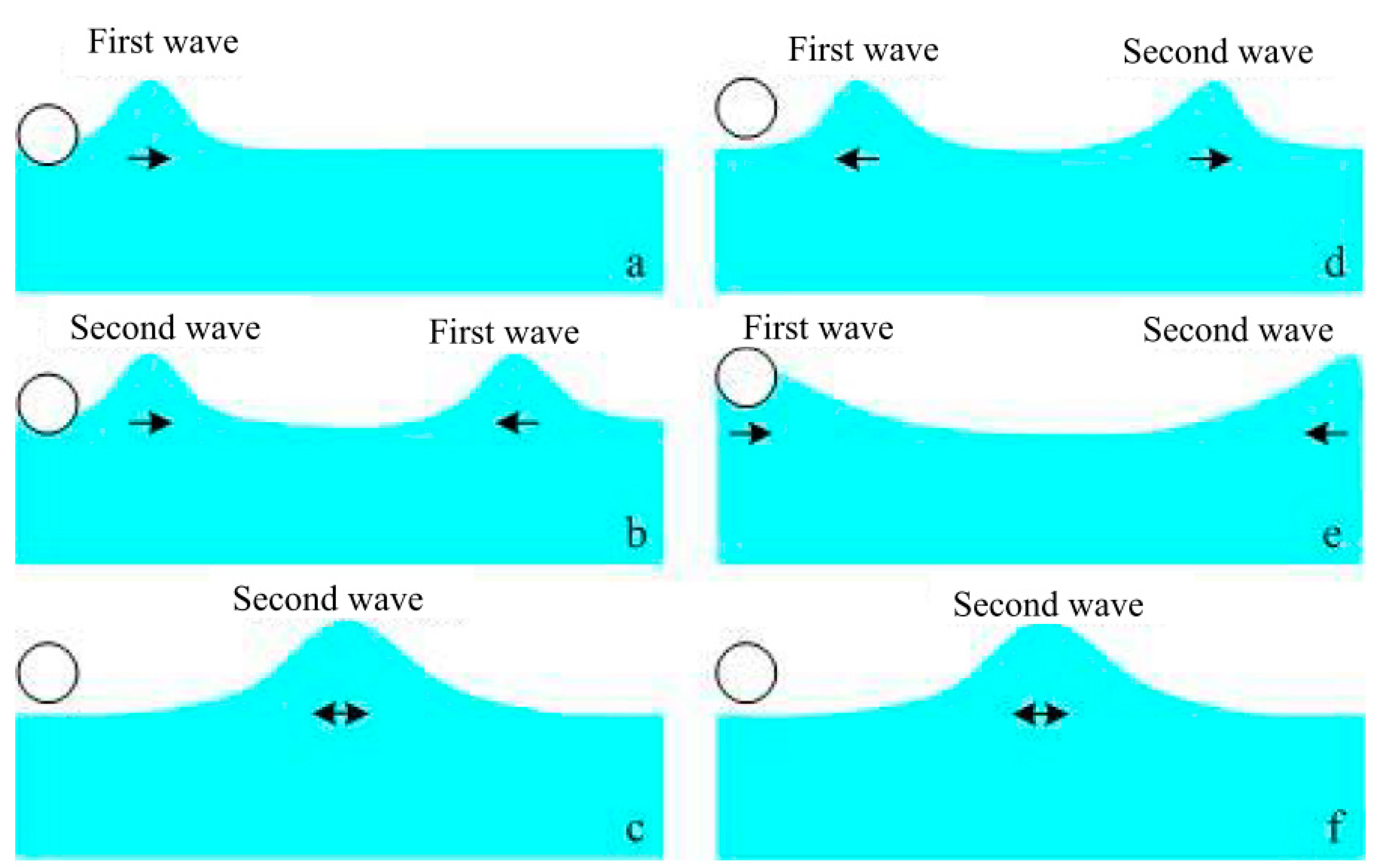
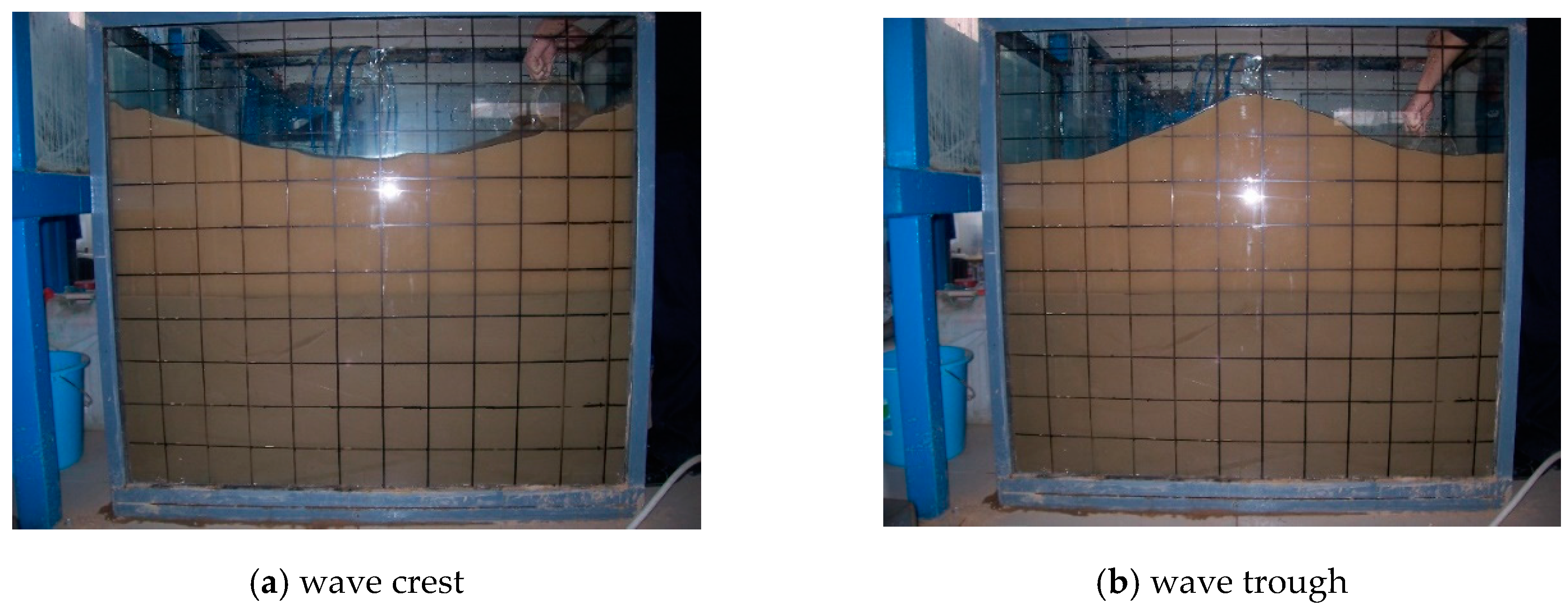





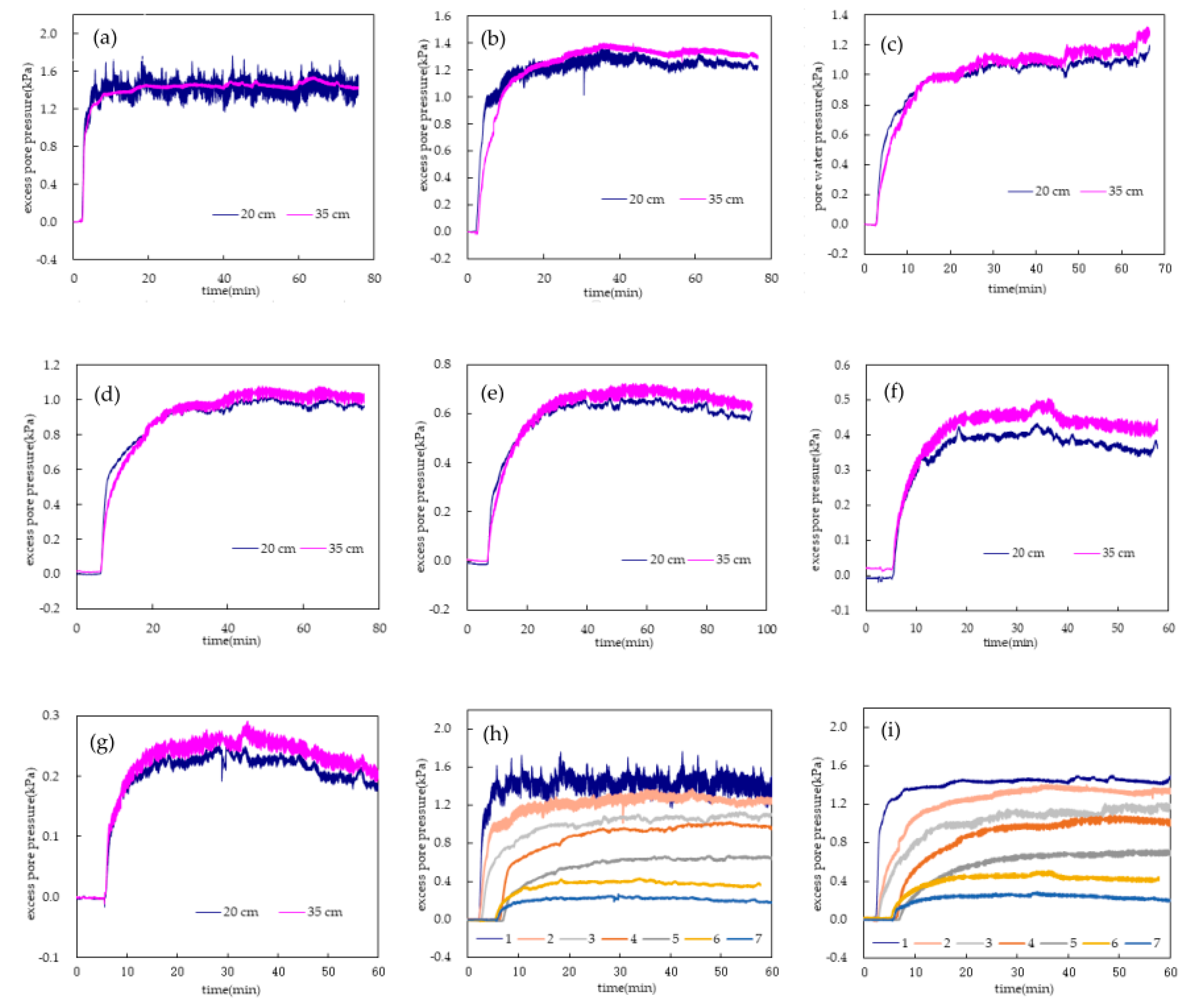

© 2019 by the authors. Licensee MDPI, Basel, Switzerland. This article is an open access article distributed under the terms and conditions of the Creative Commons Attribution (CC BY) license (http://creativecommons.org/licenses/by/4.0/).
Share and Cite
Wang, X.; Zhu, C.; Liu, H. Wave-Induced Seafloor Instability in the Yellow River Delta: Flume Experiments. J. Mar. Sci. Eng. 2019, 7, 356. https://doi.org/10.3390/jmse7100356
Wang X, Zhu C, Liu H. Wave-Induced Seafloor Instability in the Yellow River Delta: Flume Experiments. Journal of Marine Science and Engineering. 2019; 7(10):356. https://doi.org/10.3390/jmse7100356
Chicago/Turabian StyleWang, Xiuhai, Chaoqi Zhu, and Hongjun Liu. 2019. "Wave-Induced Seafloor Instability in the Yellow River Delta: Flume Experiments" Journal of Marine Science and Engineering 7, no. 10: 356. https://doi.org/10.3390/jmse7100356




